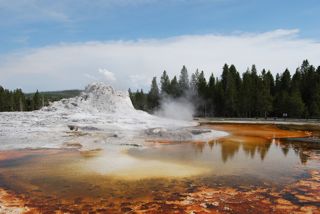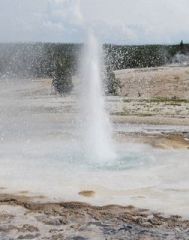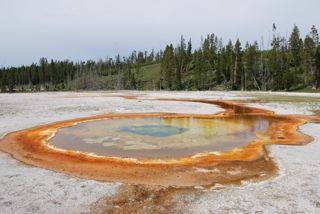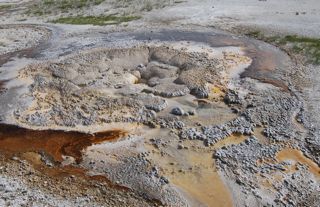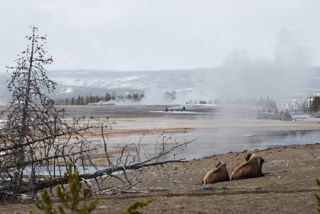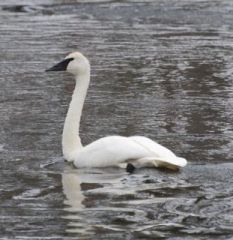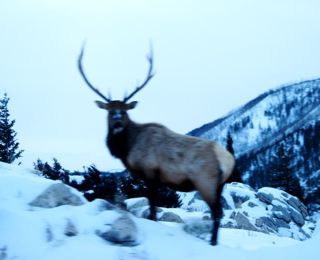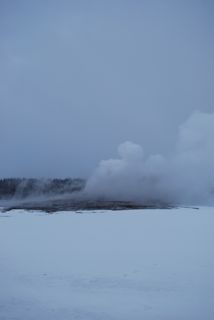 A park ranger telling the story of a thousand year-old tree around a campfire in Rocky Mountain National Park inspired my passion for national parks. Although I did not realize my childhood dream of becoming a park ranger, I have been lucky to work in roles that support our national parks.
A park ranger telling the story of a thousand year-old tree around a campfire in Rocky Mountain National Park inspired my passion for national parks. Although I did not realize my childhood dream of becoming a park ranger, I have been lucky to work in roles that support our national parks.
During my time in Yosemite, I learned an enormous amount from the dedicated interpreters who were so generous about sharing their love for the park—Dick Ewart, Dean Shenk, Margaret Eissler, Erik Westerlund… and many more. Thank you for teaching me so much about Yosemite!
Of course all that knowledge is useless now—my decade of Yosemite-oriented study counts for nothing in Yellowstone. I have to start from scratch. And what better way to learn than by attending a ranger-led walk!
 After donning about eight layers of clothes, I ventured outside in twenty-degree weather to the Mammoth Hot Spring Terraces—the northern part of the park’s most active geothermal area.
After donning about eight layers of clothes, I ventured outside in twenty-degree weather to the Mammoth Hot Spring Terraces—the northern part of the park’s most active geothermal area.
While Yosemite’s geology and landscape centers around solid granite batholiths, Yellowstone’s terrain is all about volcanic activity—steaming, colorful hotsprings and geysers. Indeed, Yellowstone is known as a geologic hotspot—an area where hot molten rock rises to the surface. Lurking under this park is a vertical plume of hot rock 125 miles in depth. (Sorry, Mom, this does mean I am living next to an area that could blow sky high at any moment!)
 Robert Smith and Lee Siegel open their book, Windows into the Earth: The Geologic Story of Yellowstone and Grand Teton National Parks, with a quote from an early scientist that captures the landscape perfectly:
Robert Smith and Lee Siegel open their book, Windows into the Earth: The Geologic Story of Yellowstone and Grand Teton National Parks, with a quote from an early scientist that captures the landscape perfectly:
“Anyone who has spent summers with the pack-train in a place like Yellowstone comes to know the land to be leaping…The mountains are falling all the time and by millions of tons. Something underground is shoving them up.”
Our park ranger for the day, Debbie, took her party of two intrepid students (myself and a woman from Texas) on a delightful two-hour walk on the terraces. She gave a great introduction to winter survival strategies and the formation process behind the terrace development.
 Halfway through the hike, snowflakes began falling, yet the whiteness in both land and sky lent this already surreal landscape an even more mystical quality. Elk grazed on uncovered grass near thermal pools, rising steam disappeared into the falling snowflakes, and a highway of animal tracks decorated the snow.
Halfway through the hike, snowflakes began falling, yet the whiteness in both land and sky lent this already surreal landscape an even more mystical quality. Elk grazed on uncovered grass near thermal pools, rising steam disappeared into the falling snowflakes, and a highway of animal tracks decorated the snow.
At Orange Springs Mound, we saw evidence of nature asserting her authority. The water flow had shifted from the top of the mound to the side, and the water had begun running down the asphalt road, leaving mineral deposits to color the pavement. Two park geologists were checking out the site when we arrived. As this is a popular road in the summer, the water’s route is problematic, but I think the beautiful oranges and greens left by the bacteria and algae are works of art.
 For Pete Devine---You will be so proud of me!!! On our walk, a park visitor asked the ranger what bird call we were hearing, and I said without evening thinking, “that’s a clark’s nutcracker.” And I was right!
For Pete Devine---You will be so proud of me!!! On our walk, a park visitor asked the ranger what bird call we were hearing, and I said without evening thinking, “that’s a clark’s nutcracker.” And I was right!
Note--although Pete's not an official national park ranger, he's also an interpreter I learned an enormous amount from--thank you, Petey, and watch out for the buttoned shirts.
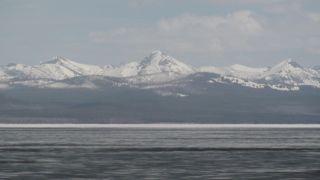 Yellowstone Lake
Yellowstone Lake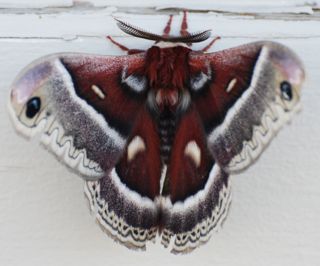 Cecropia Moth
Cecropia Moth Three Bighorn Lambs
Three Bighorn Lambs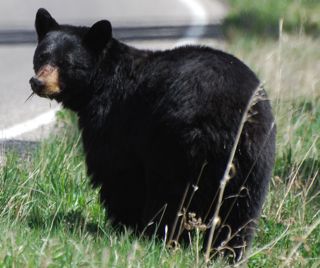 Black Bear near Tower
Black Bear near Tower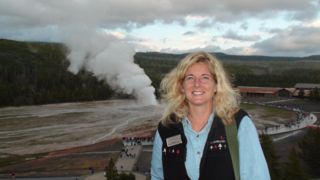 Watching Old Faithful Erupt from the Crow's Nest
Watching Old Faithful Erupt from the Crow's Nest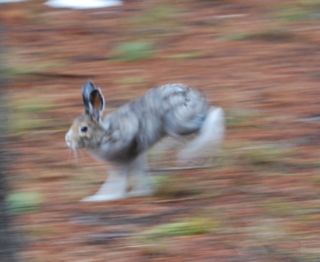 Snowshoe Hare in motion
Snowshoe Hare in motion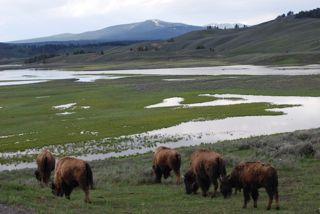 Bison Grazing in Hayden Valley
Bison Grazing in Hayden Valley Grizzly Near Washburn
Grizzly Near Washburn
